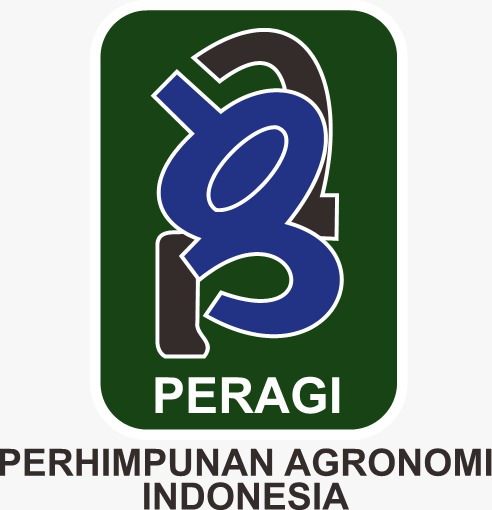The Effect Of Planting Distance On The Growth And Yield Of Cabbage (Brassica oleracea L.) In The Lowland's Klamalu Village, Mariat District, Sorong Regency
Abstract
The decline in production of cabbage in Indonesia is due to the lack of intensive and traditional cultivation of this plant, ie without the use of spacing and frequency that is not appropriate, resulting in a seizure of nutrients from the soil by plants and organ cover of the cabbage plant itself which inhibits the photosynthesis process. So this research was conducted to know the effect of effective spacing that can increase the growth and production of cabbage plants. This study used a single factor randomized block design consisting of 4 levels of treatment, namely 1) Without Planting Distance; 2) Planting distance 35 cm x 35 cm; 3) Distance to plant 45 cm x 45 cm; and 4) Planting distance 55 cm x 55 cm. Each treatment was repeated 3 times to obtain 12 experimental units. The plant spacing factor on cabbage had a significant effect on the observation of plant height, the number of leaves, and leaf length. While the results of observations on the fresh weight of cabbage buds did not have a significant effect on the spacing treatment. The planting distance at 25cm x 55cm gave the best effect on the growth and production of cabbage (Brassica oleraceae L.).
Downloads
References
Alfandi, A., & Soedomo, RD. P. (2006). Pengaruh Kombinasi jarak Tanam dan Jumlah Biji Per Lubang Terhadap Pertumbuhan dan Daya Hasil Tanaman Kacang Buncis (Phaseolus vulgaris L.). AGRIJATI: Jurnal Ilmu-Ilmu Pertanian, 3(1), 6–12.
Dewanti, S. K., Fuskhah, E., & Sutarno. (2019). Pertumbuhan dan Produksi Kale (Brassica oleracea var. Acephala) pada Dosis Pupuk Kascing dan Jarak Tanam Yang Berbeda. Jurnal Pertanian Tropik, 6(3), 393–402.
Erwin, S., Ramli, & Adrianton. (2015). Pengaruh Berbagai Jarak Tanam Pada Pertumbuhan dan Produksi Kubis (Brassica oleracea L.) Di Dataran Menengah Desa Bobo Kecamatan Palolo Kabupaten Sigi. Agrotekbis, 3(4), 491–497.
Fajeriana M, N., & Wijaya, R. (2020). Analisis Kemampuan Lahan dan Kesuburan Tanah Pada Lahan Perencanaan Kebun Percobaan Universitas Muhammadiyah Sorong di Kelurahan Sawagumu Kecamatan Malaimsimsa. Median : Jurnal Ilmu Ilmu Eksakta, 12(3), 122. https://doi.org/10.33506/md.v12i3.1130
Fajeriana, N., Rasyid, B., & Zubair, H. (2013). Simulasi GreenCrop Tracker Untuk Serapan Hara Tanaman Padi Ladang dan Kedelai. Program Pascasarjana Universitas Hasanuddin, 13(3), 223–233. https://pasca.unhas.ac.id/jurnal/
Harahap, F. S., Oesman, R., Fadhillah, W., & Rafika, M. (2021). Chemical Characteristics Of Inceptisol Soil With Urea and Goat Manure Fertilizer. JUATIKA: Jurnal Agronomi Tanaman Tropika, 3(2), 117–127.
Jumin, H. B. (2017). Dasa-Dasar Agronomi (Cetakan IX). PT. Raja Grafindo Perkasa: Jakarta.
Kriswantoro, H., Safriyani, E., & Nurkhoiri, R. (2017). Respon Buncis (Phaselous vulgaris L.) pada Berbagai Konsentrasi Giberelin dan Jarak Tanam di Tanah Ultisol. In S. Herlinda (Ed.), Prosiding Seminar Nasional Lahan Suboptimal 2017, Palembang 19-20 Oktober 2017 “Pengembangan Ilmu dan Teknologi Pertanian Bersama Petani Lokal untuk Optimalisasi Lahan Suboptimal” (pp. 310–317).
Laksono, R. A. (2016). Pertumbuhan dan Hasil Tanaman Kubis Bunga (Brassica oleracea L. var. Botrytis subvar. Cauliflora DC.) Kultivar Orient F1 Akibat Jenis Mulsa dan Dosis Bokashi. Jurnal Agrotek Indonesia, 1(2), 81–89.
Luthfiana, H. A., Haryono, G., & Historiawato. (2019). Hasil Tanaman Kubis Bunga (Brassica oleracea var. botrytis L.) Pada Jarak Tanam dan Mulsa Organik. VIGOR: Jurnal Ilmu Pertanian Tropika Dan Subtropika, 4(1), 18–23.
Mulyani, C., Heviyanti, M., & Hardiansyah, I. (2019). Pengaruh Jarak Tanam dan Interval Penyemprotan Ekstrak Daun Muntingia calabura Terhadap Hama Spodoptera litura, F Pada Bunga Kol (Brassica oleracea L.). Agrosamudra, Jurnal Penelitian, 6(1), 20–31.
Pesireron, M., Kaihatu, S. S., & Senewe, R. E. (2020). Keragaman Varietas Kubis (Brassica oleracea L) Dataran Rendah dengan Aplikasi Mulsa di Maluku. Jurnal Budidaya Pertanian, 16(1), 42–50.
Rahmawati, E., Wardani, R., & Sari, N. V. (2015). Pengarih Poc Top G2 dan Jarak Tanam Terhadap Hasil Buncis (Phaseolus vulgaris L.). Jurnal Magrobis, 15(1), 31–40.
Ridwan, M., Rahmatu, R., & Ali, R. (2013). Respon Varietas Kubis (Brassica oleracea L.) terhadap Berbagai Jenis Mulsa Organik di Desa Langaleso Kecamatan Dolo. Agroland: Jurnal Ilmu-Ilmu Pertanian, 20(2), 99–104.
Syakur, A., Hadid, A., & Sepena, L. I. (2016). Pengaruh Jarak Tanam Tanaman Pagar dan Dosis Pupuk Kandang Terhadap Pertumbuhan dan Hasil Tanaman Tomat (lycopersium esculentumMill). Agroland: Jurnal Ilmu-Ilmu Pertanian, 23(1), 55–63.
Copyright (c) 2022 Akhmad ali, Nurul Fajeriana

This work is licensed under a Creative Commons Attribution 4.0 International License.
Authors who publish with Jurnal Agronomi Tanaman Tropika (JUATIKA) agree to the following terms:
Authors retain copyright and grant the Jurnal Agronomi Tanaman Tropika (JUATIKA) right of first publication with the work simultaneously licensed under a Creative Commons Attribution License (CC BY 4.0) that allows others to share (copy and redistribute the material in any medium or format) and adapt (remix, transform, and build upon the material for any purpose, even commercially) with an acknowledgment of the work's authorship and initial publication in Jurnal Agronomi Tanaman Tropika (JUATIKA).
Authors are able to enter into separate, additional contractual arrangements for the non-exclusive distribution of the journal's published version of the work (e.g., post it to an institutional repository or publish it in a book), with an acknowledgment of its initial publication in Jurnal Agronomi Tanaman Tropika (JUATIKA). Authors are permitted and encouraged to post their work online (e.g., in institutional repositories or on their website) prior to and during the submission process, as it can lead to productive exchanges, as well as earlier and greater citation of published work.







 More Information
More Information



